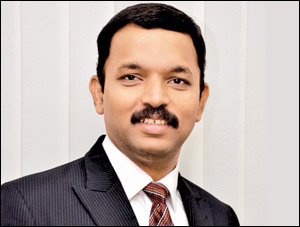
Eaton is committed to developing customer solutions that drive sustainable growth.
To what extent has the stringent emission norms and increasing demand for highly fuel and energy efficient equipment had a bearing on the growth trajectory of hydraulic systems manufacturers such as Eaton?
All hydraulics equipment essentially needs to fit into the prescribed energy efficiency norms. The end users, OEMs and consultants, all demand highly energy efficient machines so that the running cost of power is kept low and consequently the total cost of ownership comes down. New designs, materials, and technologies are extending this advantage like never before. However, good as they are these new components are destined to be a smaller piece of the overall hydraulics industry pie.
The real action in the future is going to be focused not on components, but rather on integrated system solutions that marry hydraulics and electronics in increasingly innovative ways. This marriage will deliver even smarter products that combine the intelligence of electronics with the power density of hydraulics to enable all of these applications and many more that have not ever been thought of yet.
Eaton is answering the emerging needs through the development of new smart electro-hydraulic technologies that shrink the footprint of hydraulics systems, improve their performance and energy efficiency and reduce emissions. These technologies give equipment manu?facturers greater design flexibility to achieve the goal that every customer desires which is more function and less fuel.
How do you address the OEMs demands that are seemingly contradictory with reference to energy and fuel efficiency?
Globally across industries, OEMs are getting technically more demanding with their needs becoming seemingly contradictory. The equipment must be more powerful while being very fuel efficient. It needs to be extremely rugged while being very precise at the same time. The old demands of reliability remain, but new standards of flexibility, serviceability and power are now being set.
Hydraulics providers have a major role to play in enabling OEMs to meet these demands. OEMs are depending on their hydraulics partners to provide the smart muscle to power their machines. Hydraulic systems that can handle greater pressure with increased flow capacity and combined in smaller packages to increase power density are in demand. At the same time, better controls and precise power management through integration of electronic controls is required in order to meet the demands placed on this equipment.
We believe Eaton is uniquely qualified to meet the needs of our OEMs. Eaton has a long history of serving the OEMS in key segments such as construction and agriculture around the world as well as in India.
Does Eaton focus on green products?
Eaton's ability to develop innovative products and solutions that help customers and end-users conserve resources and reduce their carbon footprint is critical to realising Eaton's vision of becoming the most admired company in the market. Eaton is thus committed to developing customer solutions that drive sustainable growth around the globe. Eaton engineers are constantly developing smarter ways to simultaneously deliver both ecological and economic benefits through the development of energy efficient and environmentally friendly technologies.
I would also like to talk about the electro-hydraulic technology which uses the same hydraulic assist technology as standard systems with the only difference being the hydraulic pressure that comes from a pump driven by an electric motor instead of a drive belt at the engine. This technology is gaining popularity in the industry due to its extremely compact package and reliability factor.
Electro-hydraulic Steering by Eaton is a combination of Char-Lynn steering unit and VickersT advanced proportional valve technology that create Eaton's new auto guidance products. These steering units are also available with Q-ampT and 2-speed, which increase efficiency while maintaining excellent road performance.


 +91-22-24193000
+91-22-24193000 Subscriber@ASAPPinfoGlobal.com
Subscriber@ASAPPinfoGlobal.com